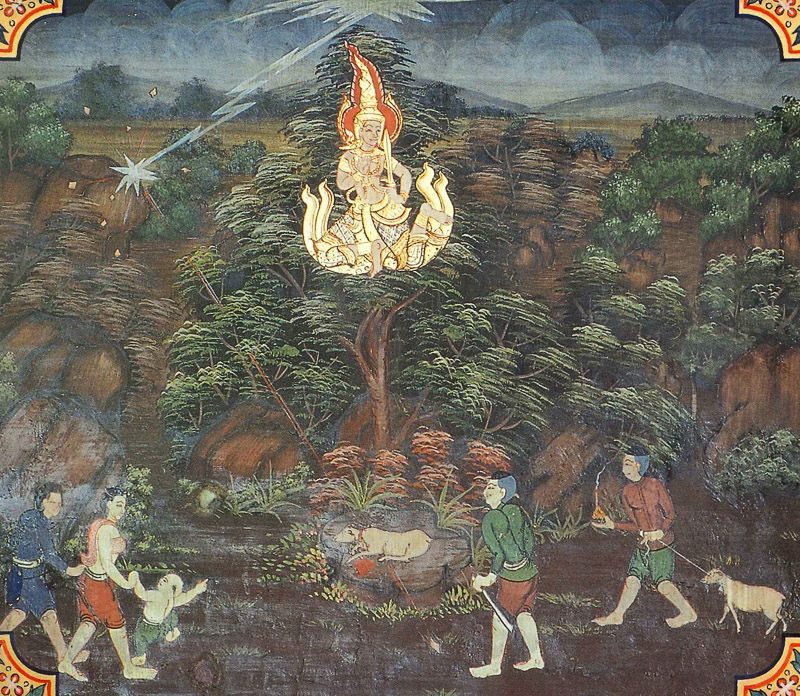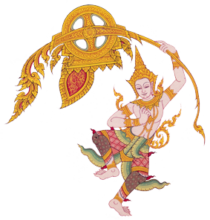
The Bodhisatta was once a tree fairy who lived near a famous brahmin priest. When it was time to offer a Feast for the Dead, the priest had his students take a goat down to the river to bathe and groom him and feed him a final meal. Nearing death, the goat became aware of his past lives and broke out in joyous laughter, but then the laughter turned to tears. The students asked the goat why he both laughed and cried, and he told them he would answer this question in front of their master.
When they brought him to the brahmin priest, the goat explained that he had once been a brahmin priest who sacrificed a goat for a Feast for the Dead, and his punishment for killing that single goat was five hundred births that all ended with his head being cut off. This was going to be his last beheading, so the laughter was because his impending death would free him from misery. And he wept wails of compassion because he realized the priest would suffer a similar karmic fate after killing him. When the priest heard the story, he decided not to kill the goat and said he would follow him around to protect him. But the goat said that no matter what the priest did, there was no escaping his fate. Shortly after he was set free, a bolt of lightning struck a rock and a shattered fragment tore the goat’s head off.
The Bodhisatta had seen these events and magically materialized seated cross-legged in mid-air to preach about the consequences of killing to the crowd of people that had gathered there. He filled them with the fear of hell, and everybody who heard him speak lived righteous lives from that point on.
In the Lifetime of the Buddha
When local people began killing goats, sheep, and other animals to offer to their departed relatives during a Feast for the Dead, some of the Buddha’s disciples asked him if any good could result from this. The Buddha answered that good never came from killing, even when the intention was noble, and he told them this story as an example.
The Buddha did not identify any earlier births other than his own.
